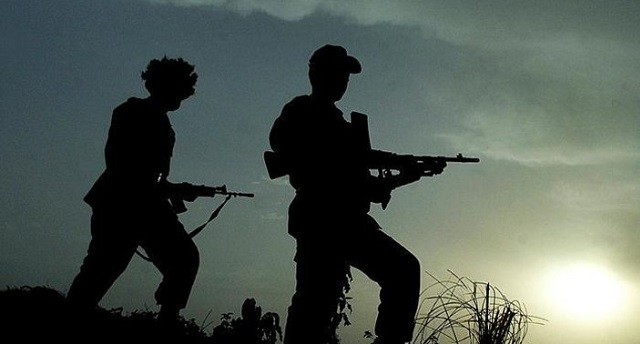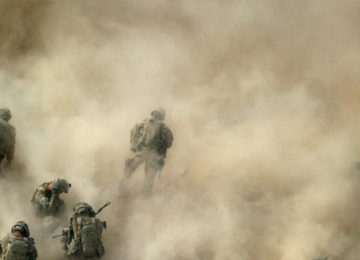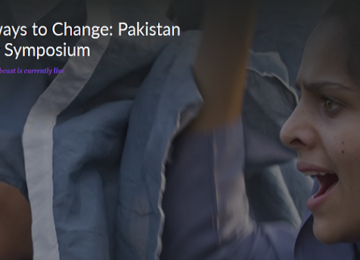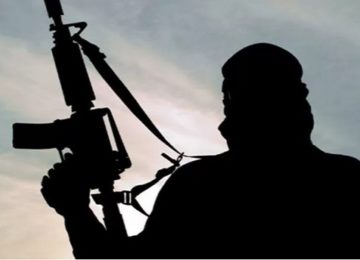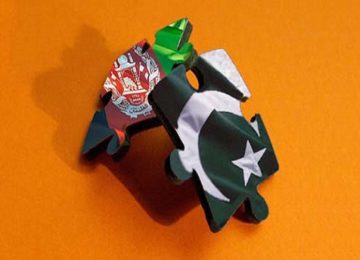June 11, 2020
Authors: Zeeshan Haider and Mohammad Nafees
Pakistan has been facing several internal and external threats for over four decades because of the global geo-politics, rivalries of the regional countries as well as big powers’ Great Game in the region.
The Soviet occupation of Afghanistan and the success of the Islamic revolution in neighboring Iran in the late 1970s turned the entire region into a hotbed of Islamist militancy.
Pakistan became the frontline state in the U.S.-backed and Saudi-funded Afghan holy war or jihad against Soviet invasion, resulting in the emergence of militant groups all over the country.
After withdrawal of Soviet troops from Afghanistan in the late 1980s, the Afghan war veterans joined the Kashmiri freedom movement against Indian occupation in 1989 which further strengthened militant groups in Pakistan.
Side by side, Pakistan became the battleground for a proxy war between Saudi Arabia and Iran which gave birth to Sunni and Shi’ite sectarian militant groups in the country.
The spectacular rise of the Taliban in early 1990s turned Afghanistan into a safe haven for Sunni militant groups of all hues. They included groups fighting for Taliban full control over Afghanistan, Kashmiri militant groups as well as groups having transregional agenda like al Qaeda.
The U.S. invasion of Afghanistan in the wake of 9/11 attacks resulted in the fall of Taliban regime but it served as a rallying point for militant groups to close their ranks to launch a joint insurgency against U.S.-led foreign troops in that country. The militants fleeing the U.S.-led invasion made Pakistan’s bordering areas as a springboard for attacks on foreign forces in Afghanistan but have also launched a massive and bloody campaign of attacks across Pakistan to revenge for its support to the so-called U.S.-led war on terror.
Through a relentless campaign of militancy operations spanning over a decade and half, Pakistan has been successful in breaking the back of the militant groups which have perpetrated violence in the country but the militancy is far from over because of continuing insurgency in Afghanistan and Kashmir.
Hope for peace in Afghanistan has risen after opening of direct talks between the United States and Taliban in recent months but chances for the settlement of Kashmir dispute have remained elusive.
Pakistan has had uneasy ties with India mainly over the Himalayan region of Kashmir since their independence from British colonial rule in 1947.
However, there has been a significant easing of tensions between the two when they launched a peace process in the 2004 with the tacit support of the United States.
But the relations suddenly deteriorated following the 2008 Mumbai attacks blamed by India on Pakistan-based militants. Tensions further spiraled after India’s Pathankot airbase attack and militant assault on Uri army camp in the Indian occupied Kashmir in 2016.
Another attack on India security forces in the Pulwama district of Indian held Kashmir (February 2019) brought the two countries to the brink of another war; it prompted a major Indian fighter jets’ intrusion into the forested Balakot valley in the northwest adjacent to the disputed Kashmir. Pakistan responded to this aggression by shooting down two Indian jets on Feb 27. The wreckage of one of the jets fell into the Pakistanis part of Kashmir. Its pilot Abhinandanwas arrested but released in a goodwill gesture within days.
But despite this gesture, the relations have remained remarkably tense because of the rigid stance of the Hindu nationalist government of India led by Prime Minister Narendra Modi. There have been frequent clashes and skirmishes between the armies of the two nuclear-armed nations along the Line of Control dividing the Himalayan Kashmir region between them.
According to the data maintained by the Center for Research and Security Studies (CRSS), 547 people have lost their lives in cross-LoC clashes between October 2016 and May 2020 (325 in Azad Kashmir and 222 in the Indian held Kashmir) while 792 have been wounded in these clashes. (Tables 01 & 02).
| Table 01: Casualties of border conflicts in Pakistan (October 2016- May 2020) | |||
| Year | Fatalities | Injuries | Casualties |
| 2016 | 49 | 71 | 120 |
| 2017 | 87 | 152 | 239 |
| 2018 | 70 | 133 | 203 |
| 2019 | 94 | 133 | 227 |
| Jan – May 2020 | 25 | 67 | 92 |
| Total | 325 | 556 | 881 |
| Table 02; Casualties of border conflicts in India (October 2016- May 2020) | |||
| Year-wise data | Killed | Injured | Casualties |
| 2016 | 40 | 7 | 47 |
| 2017 | 46 | 92 | 138 |
| 2018 | 58 | 42 | 100 |
| 2019 | 66 | 79 | 145 |
| Jan – May 2020 | 12 | 16 | 28 |
| Total | 222 | 236 | 458 |
Relations between the two rivals have deteriorated so much that there seems no chance of a thaw in their ties in near future.
Pakistan is also facing a low-level ethnic Baluch nationalist insurgency in its southwest which is believed to be stoked by India to avenge Islamabad’s support for Kashmiri freedom struggle.
Around1,283 people have lost their lives in Indian-occupied Kashmir between October 2016 and May 2020 while 1,984 people were killed in Indian-sponsored insurgency in Baluchistan in the same period. (Refer Tables 03& 04).
| Table 03: Fatalities from insurgency – Year wise data | ||
| Baluchistan | Fatalities | Injuries |
| 2016 | 805 | 288 |
| 2017 | 489 | 243 |
| 2018 | 405 | 150 |
| 2019 | 226 | 112 |
| Jan – May 2020 | 59 | 6 |
| Total | 1984 | 799 |
| Table 04: Militancy in India (Oct 2016 -May 2020) | ||
| Kashmir | Fatalities | Injuries |
| 2016 | 75 | 6 |
| 2017 | 312 | 130 |
| 2018 | 357 | 75 |
| 2019 | 428 | 303 |
| Jan – May 2020 | 111 | 1 |
| Total | 1283 | 515 |
With the outbreak of the deadly Covid-19 pandemic, it was expected guns would fall silent and both countries would focus their attention on fighting the contagion which pose a major danger to the poverty-stricken nations but those hopes proved to be short-lived.
Pakistan has meanwhile shot down eight Indian spy drones this year so far, the latest was brought down in the Khanjar sector along the LoC.
It shows that a passionate call from the UN Secretary-General António Guterres that hostilities across the world should be eschewed and entire attention should be focused on the battle against Covid-19 has fallen on the deaf ears.
Zeeshan Haider is an Islamabad-based journalist. M.Nafees is a senior Research Fellow with the Center for Research and Security Studies (CRSS), an Islamabad-based think tank. He provided the statistical input for this paper.



